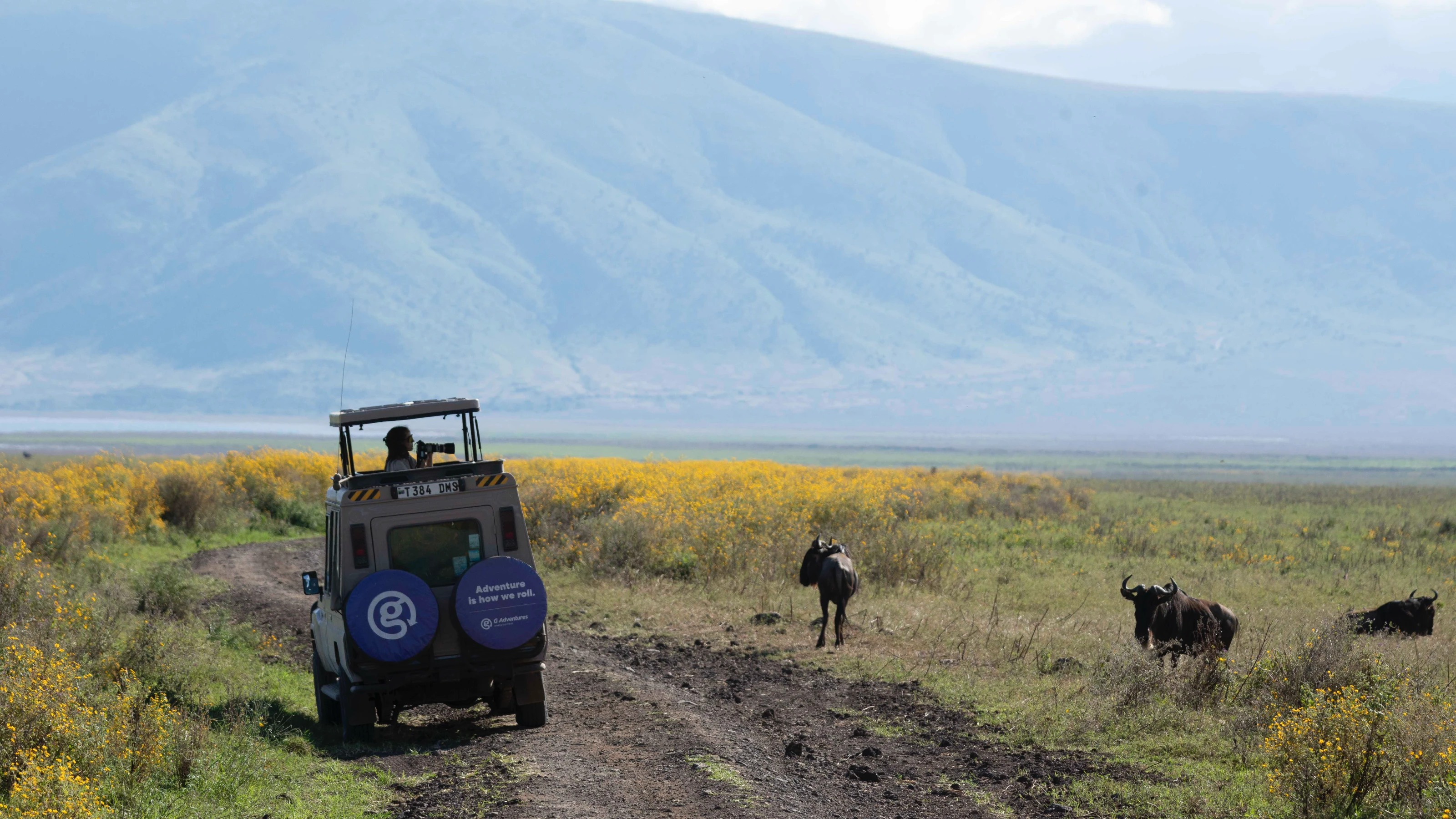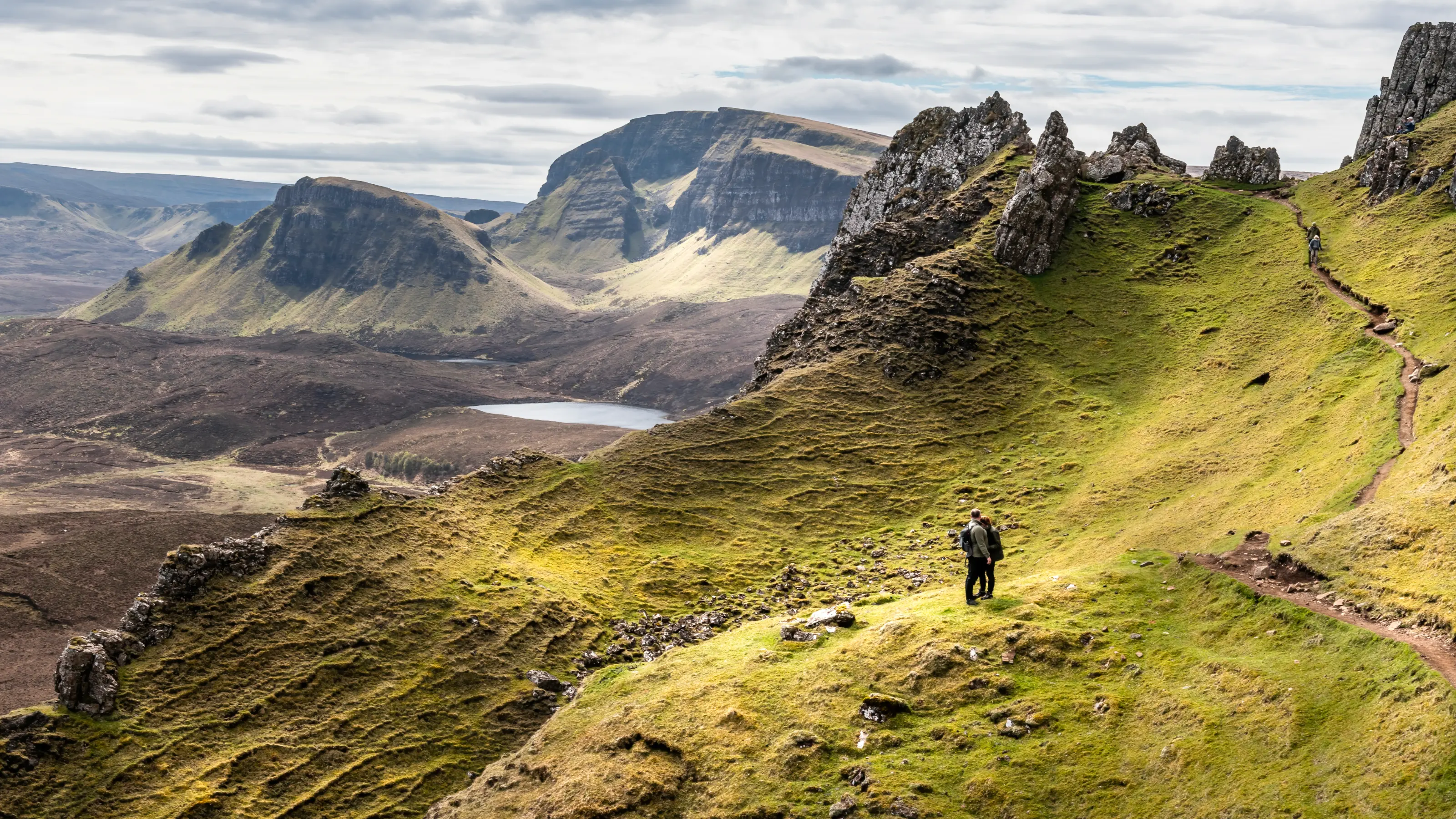Blue views and white hues: the ultimate guide to Santorini

Four islets scattered around the waxing-moon-shaped Thira island collectively form the southernmost archipelago in the Cyclades, Santorini. There’s something ethereal about this cluster of must-visit islands in Greece, beyond the mythological tales that a son of Poseidon, god of the sea, created Santorini. Santorini is a large caldera with a sunken centre that plunges 400m (1,312 ft) below the waves. Clinging to the slopes of its two inhabited landmasses, Thira and its smaller sibling Thirasia, are towns of blue and white houses carved into the volcanic rock, known as yposkafas. It’s the only place in the world with these impressive, gravity-defying caldera settlements.
Best things to do in Santorini
Siga siga – do as the Greeks do and take things "slowly, slowly." Listen for this common phrase among local people, who say it as a reminder to take it easy and enjoy the moment. Pay attention to all five senses in Greece as you get to know Santorini’s history, cuisine, and landscapes.
Walk among Akrotiri's ancient ruins
Before the Minoan eruption about 3,000 years ago that resulted in a caldera, there was a single large island where the Minoans, the first great Greek civilization, lived. Today, you can visit the Akrotiri archaeological site, one of the best historic sites in Greece, to see what’s left of their Bronze Age settlement. Some people believe that the rest of the settlement vanished underwater in the eruption and that this is the Lost City of Atlantis that Plato described.
Experience it for yourself on: Highlights of the Greek Islands
Watch sunsets from the caldera
Maybe it’s the elevated views over the Aegean Sea that make sunsets here so moving, or perhaps the glowing, rich volcanic red rock contrasting with soft sea blues during golden hour. In the evenings, Santorini’s semicircular main island becomes an amphitheatre filled with camera-ready spectators waiting for the sun’s fiery finale. You won’t be the only one view-hunting, so if you plan on watching from a bar or restaurant, book a table in advance, especially in Oia or Fira. There’s always a sociable buzz around 15th-century Oia Castle, Akrotiri Lighthouse, The Wine Bar in Imerovigli, and the Three Bells of Fira. Pyrgos, the highest village in Santorini, tends to be a little less busy, and Kastelli is a great spot.

Experience it for yourself on: Crete & Santorini Discovery
Dabble in watersports
With underwater lava caves, volcanic arches, and a dramatic dropoff into the caldera depths, Santorini has some of the best scuba diving in Greece. The temperate waters that linger around 15°C (59°F) in winter and remain above 18°C (64°F) from May to October are often visited by passing dolphins, loggerhead turtles, and lionfish. Red Beach is the best place for chilled-out snorkelling, but if you’d rather keep your head above the waves, rent a kayak from Perivolos Beach. Sailing in Greece is a dreamy way to discover neighbouring islands, or you could book a catamaran cruise.
Experience it for yourself on: Sailing Greece - Santorini to Santorini
Go on a beach quest
Craving beachfront cocktail bars, watersports, and feel-good vibes? Head to Perissa, Perivolos, and Paralia Agios Georgios. On the opposite end of the scale, hidden from the tourist trail, Armeni Beach is accessible only by boat or by walking down 286 steps. Also on the north coast are the quiet black-sand and rock Baxedes Beach, nudist-friendly Kolumbo, and cliff-backed Katharos. The most striking are the burnt-amber sands of Red Beach. Vlychada, backed by patterned dual-tone cliffs carved by the sea breeze, is another stunner, as is the dramatic ash and porcelain shores and sea stacks of White Beach.
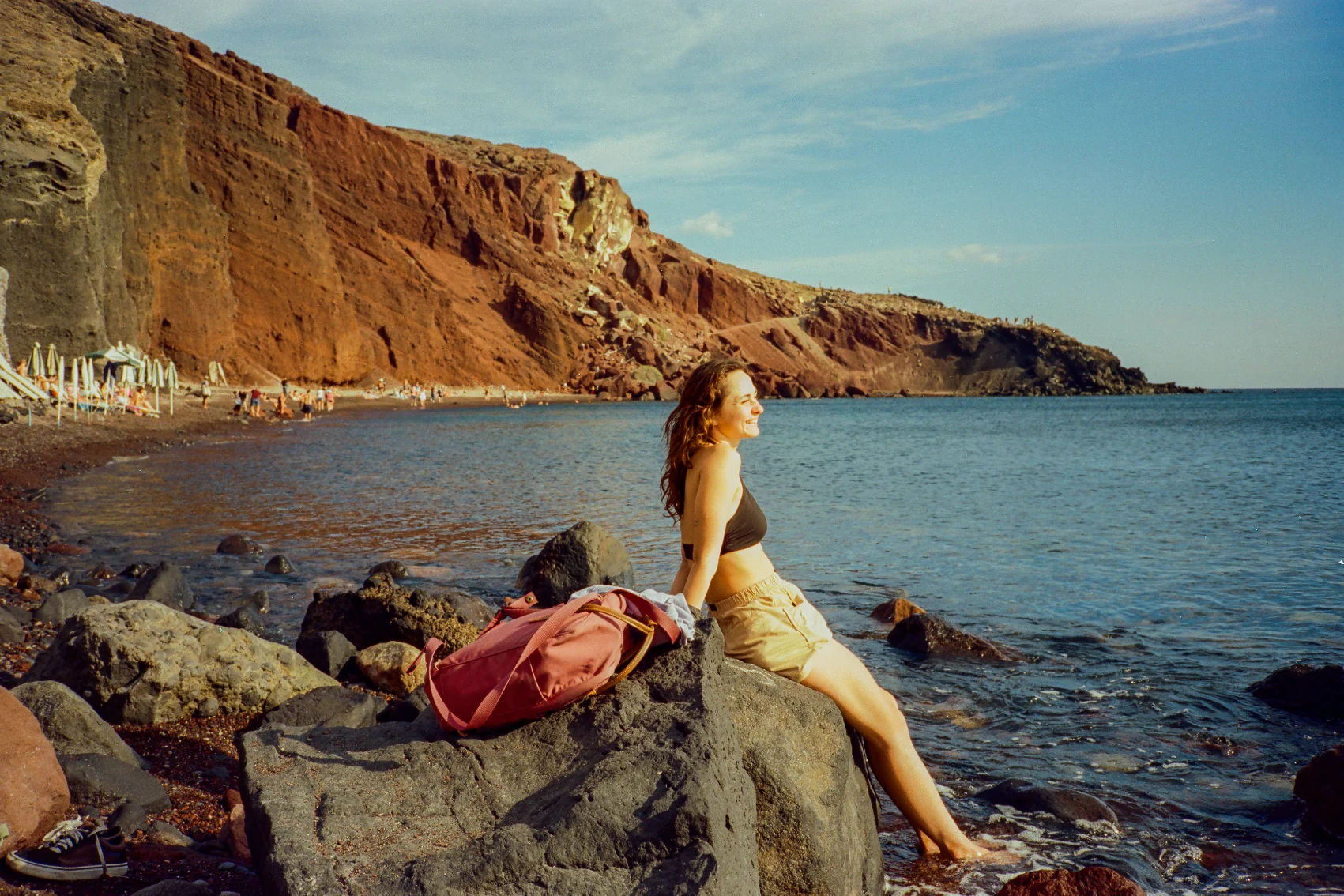
Experience it for yourself on: Journeys: Discover Greece
Villages and towns in Santorini
Only 76 sq km (29 sq mi) in size, Santorini takes no time to get around, and it’s worth exploring. The villages and towns are all walkable, and some are close enough together to get between them on foot, particularly those in the east of the island.
Oia
The most recognized place in Santorini, and for many the initial draw, Oia is a coastal, cliffside village with volcano views and three famous blue-domed churches. Lining the winding marble-paved streets are boutique shops and high-end restaurants.

Experience it for yourself on: Best of Greece
Fira
Santorini’s busy capital sits 270m (885 ft) above the sea on the island’s western edge. By day, you can visit the museums, and after dark, there’s nowhere better for a night out than Fira’s elegant clubs and cocktail bars.
Experience it for yourself on: Sailing Greece - Santorini to Mykonos
Megalochori
Megalochori is less visited and has more of a traditional Greek feel, making it a great place to chat with local people. Its impressive architecture ranges from historical cave houses to grand neoclassical mansions.
Experience it for yourself on: Solo-ish Greece
Ammoudi
Sandwiched between towering volcanic cliffs, 300 steps below Oia, is the little fishing port of Ammoudi. You can swim, boat, and dine here, and catch the sunset from a handful of taverns.
Experience it for yourself on: Sailing Greece - Athens to Santorini
Emporio
An underrated traditional village, Emporio is one of the oldest on the island. It’s full of well-preserved medieval architecture with slim, winding streets leading to wheat-grinding windmills and family-run bakeries. Overlooking the village is the hilltop 15th-century Castle of Emporio.
Experience it for yourself on: Greece: Athens and Walking in the Greek Islands
Best places to eat in Santorini
Get a taste of Santorini’s fruitful volcanic landscape. A key ingredient in many traditional recipes is the island's sun-soaked cherry tomatoes, first cultivated in the 18th century and a key ingredient in many traditional recipes. Often tossed together with pork, rice, and tomato purée are buttery-boiled fava beans. Also, make sure to try the white aubergines — they’re addictively sweet and juicy.
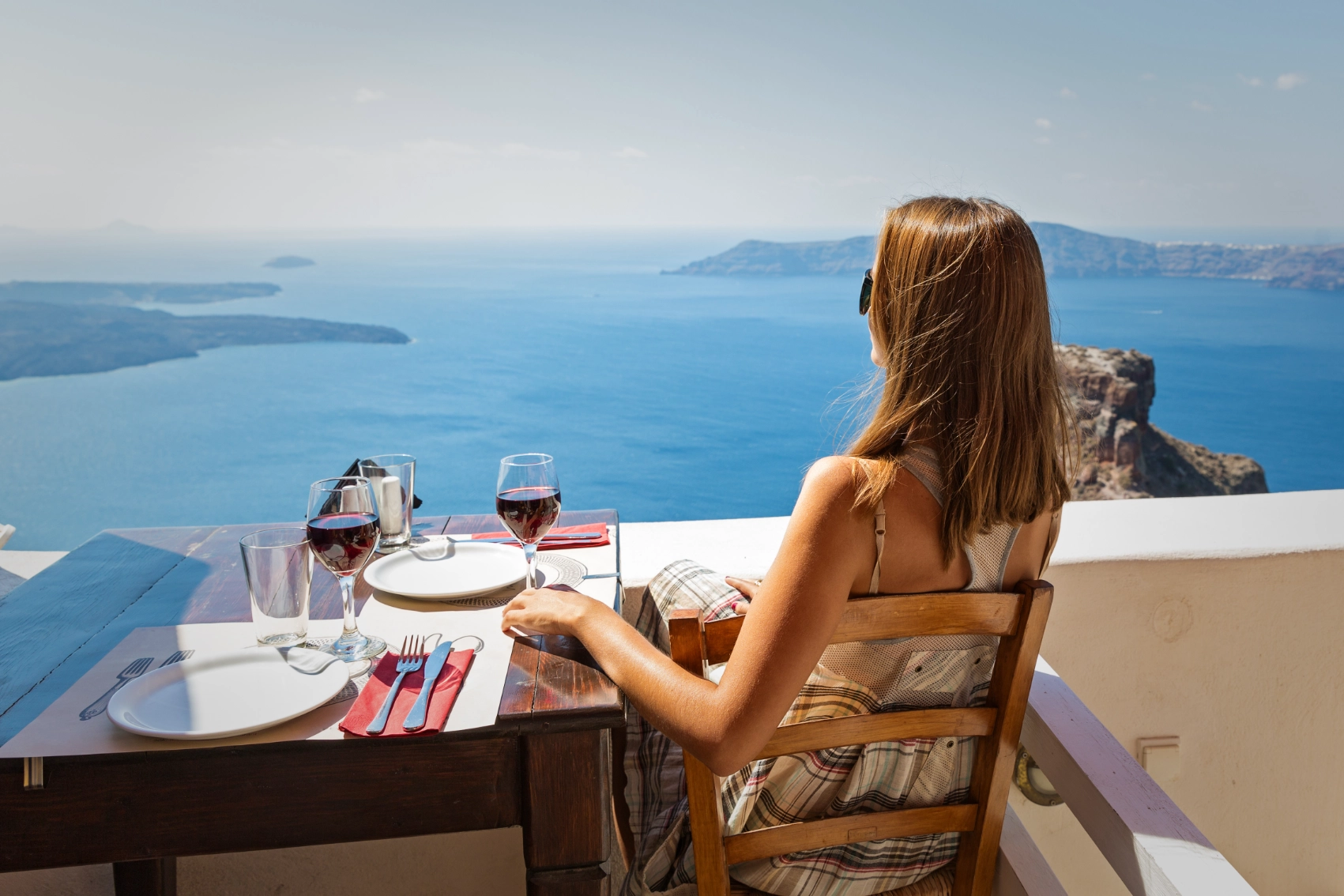
To Psaraki
For modest fish dishes cooked to perfection, eat at cliffside To Psaraki. Former fine-dining restaurant chef Thanasis opened this eatery with co-owner Aggeliki to "return to the basics" with a seasonal menu showcasing the greatest local produce.
Taverna Lava
Moussaka on the beach? This quiet restaurant serves Greek staples using family recipes and ingredients from fishers and farmers in the neighbouring villages.
Roza’s
The friendly owners and staff at Roza’s thoughtfully take care of their guests. A lot of heart goes into the menu, crafted from classic Santorini flavours and top-quality produce.
Best bars in Santorini
Having produced wine since prehistoric times, it’s fair to say Santorini’s winemakers are experts in their field. King of the grapes is the Assyrtiko variety — bottled as a crisp, fresh, dry white.

Kira Thira Jazz Bar
Filled with quirky artwork and sculptures, the oldest bar in Fira has clung to its rustic character and charm. Expect a mix of regulars and travellers to accompany you for an evening of live jazz music.
Canava Santorini
Tucked away in the side streets of Mesaria village, Canava Santorini feels somewhat untouched by time. In 1974, the Lygnos family started making ouzo and tsikoudia (brandy) here, and you can visit the old distillery to sample their staple tipples while watching an old Greek movie and taking a look around the museum.
Pelican Kipos
In the garden, sink into the outdoor sofa seating surrounded by blooming floral displays. Underground is a 400-year-old wine cave where you can browse more than 480 bottles of red, white, and rosé.
PK Cocktail Bar
Order a fruity cocktail from the laid-back terrace overlooking the sea. Arrive before dark for impressive sunset views.
Getting around Santorini
Most travellers arrive by plane at Santorini International Airport in east Thira. From here, it’s easy to travel between Santorini’s five islands by private boat, a tour, or the ferry from Athinios Ferry Port, which takes about 25 minutes to Therasia Port. Ferries also run to other Greek Islands, such as Mykonos, and the mainland. Walking is the best way to explore Santorini, but if your legs are tired, rent a car, moped, or quad bike.
Experience it for yourself on: Sailing Greece - Mykonos to Santorini
Santorini weather
July and August are the driest, hottest months, but also the most expensive because it’s the busiest time of year. While Santorini dazzles year-round, spring and fall offer milder temperatures and fewer visitors. In winter, it’s extremely quiet, so lots of shops and restaurants close, but local favourites remain open.

Spring
In March, the sea starts rising from 15°C (59°F) to 19°C (66°F) by May, and the air temperature jumps from 14°C (57°F) to 20°C (68°F). Toward the end of spring, it can get as toasty as 29°C (84°F), but you’ll still need a raincoat if you’re in Santorini in March. The average rainfall this month is 19.5mm (0.75 in).
Summer
Almost every day throughout summer, Santorini sees clear skies and sunshine with the coolest temperatures of 17°C (63°F) felt during the night in June. The daytime heat can average anywhere between 25°C (77°F) and 35°C (95°F) alongside 13.5 hours of daylight. The sea is just as toasty, ranging from 22°C (72°F) to 25°C (76°F) toward the end of summer.
Fall
Sea temperatures float above 19°C (66°F), and the season still offers plenty of daylight hours, the majority of which are beaming with sunshine, as well as a few short-lived showers. September can reach highs of 32°C (90°F), but the average temperature ranges from 20°C (68°F) to 24°C (75°F). Sweaters are sometimes needed for chillier November nights, which drop as low as 10°C (50°F).
Winter
While winter is the least favoured season, it can still get to 20°C (68°F) outside, and the sea temperature stays above 15°C (59°F). About 50% of the time it’s sunny, with a minimum of 9.5 hours of daylight. January and December tend to be the rainiest months, and at night, it can get as chilly as 4°C (39°F).

















































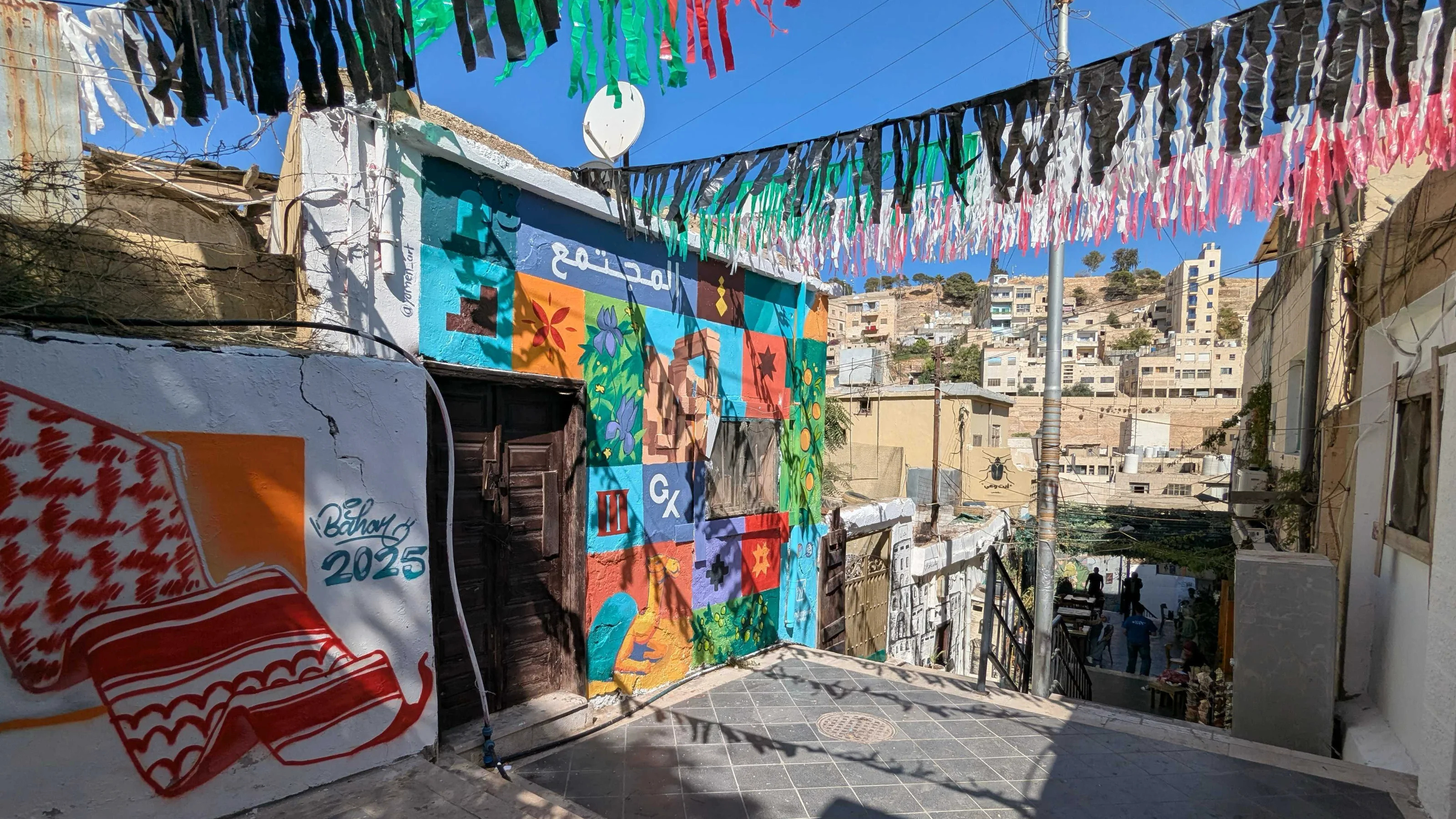


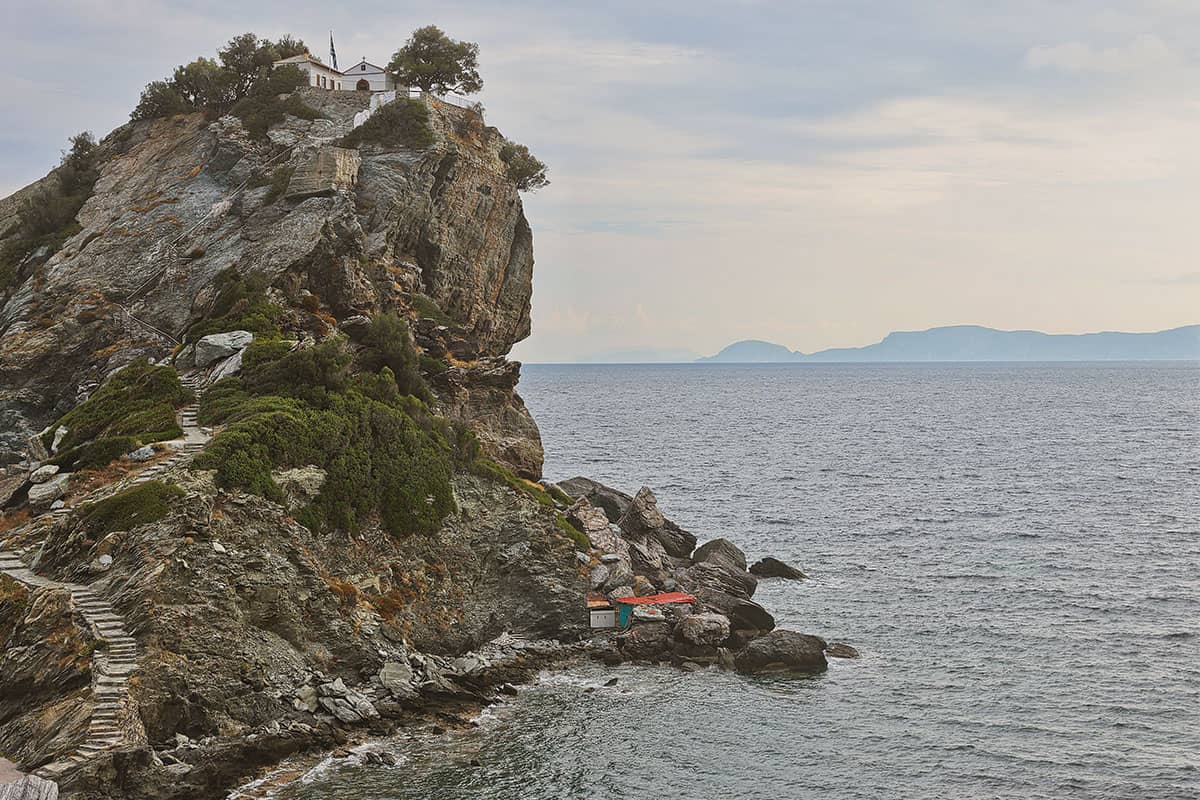





































:format(webp)/cdn.vox-cdn.com/uploads/chorus_image/image/66321622/1206682849.jpg.0.jpg)

























:format(webp)/cdn.vox-cdn.com/uploads/chorus_image/image/67131045/1261725039.jpg.0.jpg)




































/origin-imgresizer.eurosport.com/2024/02/04/3880159-78836108-2560-1440.jpg)




















